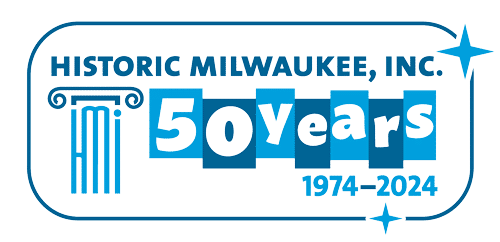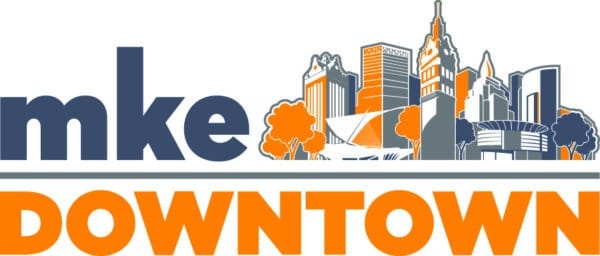Each year Historic Milwaukee’ Doors Open provides access to some of the most amazing works of architecture, businesses, facilities, and Historic sites across Milwaukee. What Doors Open leaves us with is the desire and ability to start looking deeply at our built environment, and the knowledge that there are hidden gems in each of our neighborhoods if we take the time to look. These videos are made in conjunction with Artists Working in Education's Art Truck Studio, in hopes of sharing some creative ways to spend time and explore the place where you live. Thanks to the Greater Milwaukee Foundation for making this project possible.
Activity 1: Mapping
Maps are an important tool for expressing information and for understanding a place. When you spend time looking and interpreting a map you get to know the landscape and how it functions. Making a map of your neighborhood is a fun way to explore where you live, and share information about the place you call home. This video encourages you to spend some time looking at and drawing maps of your neighborhood as a tool for understanding and expressing.
MATERIALS
- Scratch paper
- Plain paper
- Pens or pencils
- Coloring materials
- Google Maps or a regular map
MAPPING FROM MEMORY
Try making a map of your neighborhood from your memory, using the places you frequent as a way to start building out the streets.
- What are the places that are most important and familiar to you in your neighborhood?
- Where are the areas where you draw a blank on streets or landmarks?
GOOGLE MAPS
Use Google Maps to look at your neighborhood from above -- try using 'satellite view' to be able to see all of the features of the land clearly. Cruise around to all the places you usually go and look for places that you might not often travel. Can you find all the different places you put on your map?
- What different textures, colors, lines, and shapes can you see on the map? What are they?
- How do these different textures, colors, lines, and shapes affect the way you move and use your city?
PERSONAL MAPPING
Once you have spent some time looking and thinking about these places that are important to you, try making another map of your neighborhood or expanding on your original drawing. Use Google Maps if you want help filling in streets and landmarks.
- What visual inspiration can you take from Google Maps?
- What do you want people to know about where you live?
- What story do you want your map to tell?
Activity 2: Observing
We often decide to spend time with people to build relationships and feel connected, but how often do we make a point to spend time with a place? Taking a walk is a great way to get to know a place better. This video will share some tips for taking a SLOW observational walk and for documenting the beauty, curiosity, and inspiration you find in your surroundings.
Materials
- Phone or camera
- Sketchbook or Paper
- Writing or drawing materials
OBSERVING
Upon and Through
Experiment with looking UPON the faces of houses that are inside the grid, then looking THROUGH the gaps between houses or streets that create the lines of the grid.
- How does the grid help your observation?
- When is your visibility blocked by the grid?
- How is it made more open?
Built Environment Thought Experiment
What was here before? What did this place look like 10, 20, 100, 200 years ago?
Find Your Focus
- Something that represents your culture or of a different culture
- A sign of Welcome or of Protection
- A building or structure that is Old or New
- A place that is Public or Private
- Something you consider Beautiful or Ugly
DOCUMENT
- Photographs: Stop to snap a picture of things that catch your eye.
- Drawing: Pause longer to capture the details, or a scene that interests you, in your own hand
- Writing: Write your thoughts and observations -- write like a scientist, a journalist, or a poet
Activity 3: Creating
Now that you’ve spent some quality time with your neighborhood through mapping, walking, observing and documenting, it’s time to take all the information you’ve been gathering and make something!
There are lots of different ways or things you can create after researching and learning about a new subject. This video will share some ideas for projects inspired by mapping and observing in my neighborhood using simple materials you can find around the house.
BASIC MATERIALS (materials for each project will vary)
- THIN Cardboard food boxes
- Scissors
- Pen or pencil
- Plain paper
- Scrap paper
- Coloring materials
- Tape or Glue
- Bone Folder - (for scoring @ fold lines (not cut) - you could also use the dull side of a butter knife or a pen that has run out of ink)
OTHER POSSIBLE MATERIALS
- Colorful paper
- Collage materials
- Acrylic paint & brushes
- Decorative tapes or stickers
- X-acto blade or box cutter *
- Spray paint *
- Chalk
*Please use materials and tools safely and ask your adult for help or support. Doing projects in a team or as a family is a great way to pool your skills and work safely.
PROJECTS
1. Model Neighborhood or Model Building
Using pieces of one box, make small houses and buildings inspired by the ones you saw on your walk. Lay out your buildings on another open box to create your own version of a neighborhood. Experiment with the grid plan - how will you organize your streets, sidewalks and green spaces?
2. Stencils & Templates
Using shapes or details from the buildings you saw on your walk, sketch one continuous shape. Draw your shape onto an open box. Cut out your shape and try tracing or filling it with different materials. Try repeating it to create a pattern.
3. Silhouette Scene
From the documentation or drawings you made on your walk, choose a scene. Considering just the outline of your scene, cut the shapes out of cardboard. Tape your cardboard pieces together and attach them to the inside of a food box with holes cut on either side. Use paper to cover the scene and hole, and place it in front of a light source to show your scene!
4. Treasure Box & Supply Box
Create a box with flaps to store documents or other treasures from your walk.
Attach a string to the top of a box as a strap. Use it to carry drawing materials on your next walk!
About the Artist
Sarah Gail Luther is a Milwaukee-based artist who lovingly explores and documents the familiar, the average, or the forgotten. The results of these inquiries are always a little different, but often they manifest in drawings, performances, public events, or distributable objects. Her work strives to build an understanding of its subject, not necessarily to elevate it, but to appreciate its intricacies, humor, or humanity. See more of Sarah's work here.
















